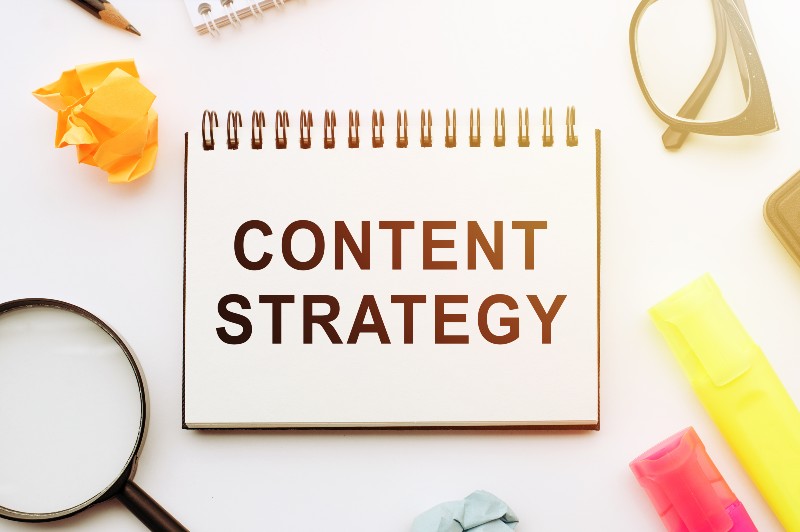How to Create a Content Strategy That Sells
Creating high-quality content is a must for any company regardless of the size and type of goods, and you must have already heard this statement hundreds of times. However, your content strategy is more than just creating relevant and compelling blogs or articles or even visuals related to the products you sell. Any content strategy you create has the same primary objective – converting more users to paying customers. Before you can achieve this, there is a journey customers go through – and that’s the marketing funnel. Knowing your customers’ journey is essential to create relevant content for the different funnel stages that support the customer journey and bring shoppers closer to a purchase.
Think of how often you have searched for information online with no intention of buying anything but ended up making an online purchase. Well, that’s because the content you found was well-designed for the customer journey. If you’ve already crafted your content strategy but still haven’t seen expected results, that’s probably because of the lack of content flow. This article will guide you to build an effective content marketing funnel of your own to create content that attracts more customers and, more importantly, content strategy that sells.
The Buyer’s Journey
The internet is today’s primary resource for finding information. It is the first place people go when they need to learn about a product, service, or how to do things at home. That means that most of the time, when people stumble upon your website, blog, or social media channels, they are unaware of your business and have no intention of buying your product, so now it’s your job to take customers to the next steps of the funnel.
What is a Content Marketing Funnel?
A content marketing funnel is a system of stages your customers go through before making a purchase. It helps companies attract more prospects and guide them from the top of the funnel, where they first interact with your brand to the bottom of the funnel– making a purchase. In short, it’s your prospects’ journey’ from the first interaction with your company to becoming a paying customer.
Three primary stages of the funnel:
- Top of the Funnel (TOFU): This is when your customers first learn about your business, for example, through a blog post, online ad, social media, and it attracts them to the page or business.
- Middle of the Funnel (MOFU): It’s when prospects become interested in what you are selling.
- Bottom of the funnel (BOFU): This is the last stage when customers decide to buy your product.
The content marketing funnel is simple and probably the most crucial aspect when creating your content strategy. That’s because when someone is at the last stage of the funnel, you don’t want to provide users with content designed for newcomers as it won’t bring them closer to purchase rather than back to where they started.
At the top of the funnel, prospects are far from making a purchase, while those at the bottom are just a few clicks away from buying your product.
Creating Content Based on the Buyer’s Journey
Creating content strategy according to the buyer’s journey will help you provide a better shopping experience for your customers and create content that increases sales.
We have seen many companies putting all their efforts into creating content for those at the top of the funnel but forgetting to supply them with content essential for the following stages of their buying journey. So although it’s thrilling to see more users coming to your site and reading your blog, they’ll soon go back without learning more about your company – that’s if you don’t create your content based on the funnel.
How to Create a Content Strategy for Each Stage of the Marketing Funnel?
The internet has made it easier to find information of any kind, and that’s where your prospects go when they need help. They search for all types of information, from how to boil water to become a certified business coach, and that doesn’t mean you have to answer all their questions, rather than the ones relevant to your business. So, if you sell skincare products, you can write about protecting skin from the sun, how to create a skincare routine, how to use the products you sell, etc. Moreover, you should create a content strategy based on each stage of the funnel below.
Top of the Funnel
At this stage, most prospects are looking for a solution for a problem, searching for more information about a product, or want to learn how to do something at home. They have no intention of buying your product yet. At this stage, it’s essential to supply them with relevant and helpful information they can easily find and consume online, whether through written content or visuals. Creating educational content is a must to attract more customers. Although there are chances that they might learn what they need and leave without interacting with your website, if website visitors find your content helpful, they’ll be more likely to get interested in your brand.
The common channels used to attract prospects at the top of the funnel are:
- Blogging
- Search Engines – Search Engine Optimization (SEO) and Search Engine Marketing (SEM)
- Social Media Marketing
Middle of the Funnel
Congratulations! Your content strategy has sparked your prospects’ attention, and now they have already moved to the middle of the funnel.
Until now, your content served to educate prospects at the top of the funnel. Now at this stage, it must demonstrate why your solution is the best one. The middle of the funnel is where you can establish credibility and trust in your brand.
Your leads at the middle of the funnel are contemplating whether your product fits their problems, so you must show your products’ value to them. Although the next stage is where they purchase your product, the middle of the funnel is where your leads decide to do so.
Although they all might have the same problems or needs, your middle-of-the-funnel leads differ in their behaviors, demographics, social standing, and preferences. Here you’ll need to distribute the right content to the specific group of your prospects using segmentation and marketing automation, like automated email marketing campaigns. Don’t forget about the blogs. They aren’t only for newcomers. Your leads at this stage may benefit from your articles as much as those at the top. More importantly, ensure your product pages provide all necessary information in detail about its uses, benefits, and ingredients.
The best channels to use at this stage include:
- Email Marketing
- Blog
- Social Media
- Products pages
The Bottom of the Funnel
The bottom of the funnel is the last step of the buyer’s journey, yet there’s no guarantee your leads will convert to paying customers. And what do you need to do here? Just a final nudge, which can be a promo code you offer or a compelling call-to-action to demonstrate why your product is the best fit in their situation. You can also use abandoned cart emails to drive purchases at this stage and remind customers of the items they left in the cart.
We hope the information above will help you create the most compelling content relevant to each stage of the funnel, so you can guide prospects to the final step of making the purchase. If you have more questions on better-utilizing content for your marketing funnel, reach out to us. At IMG, we can create, edit, and post content to fit into every stage of your marketing plan.


